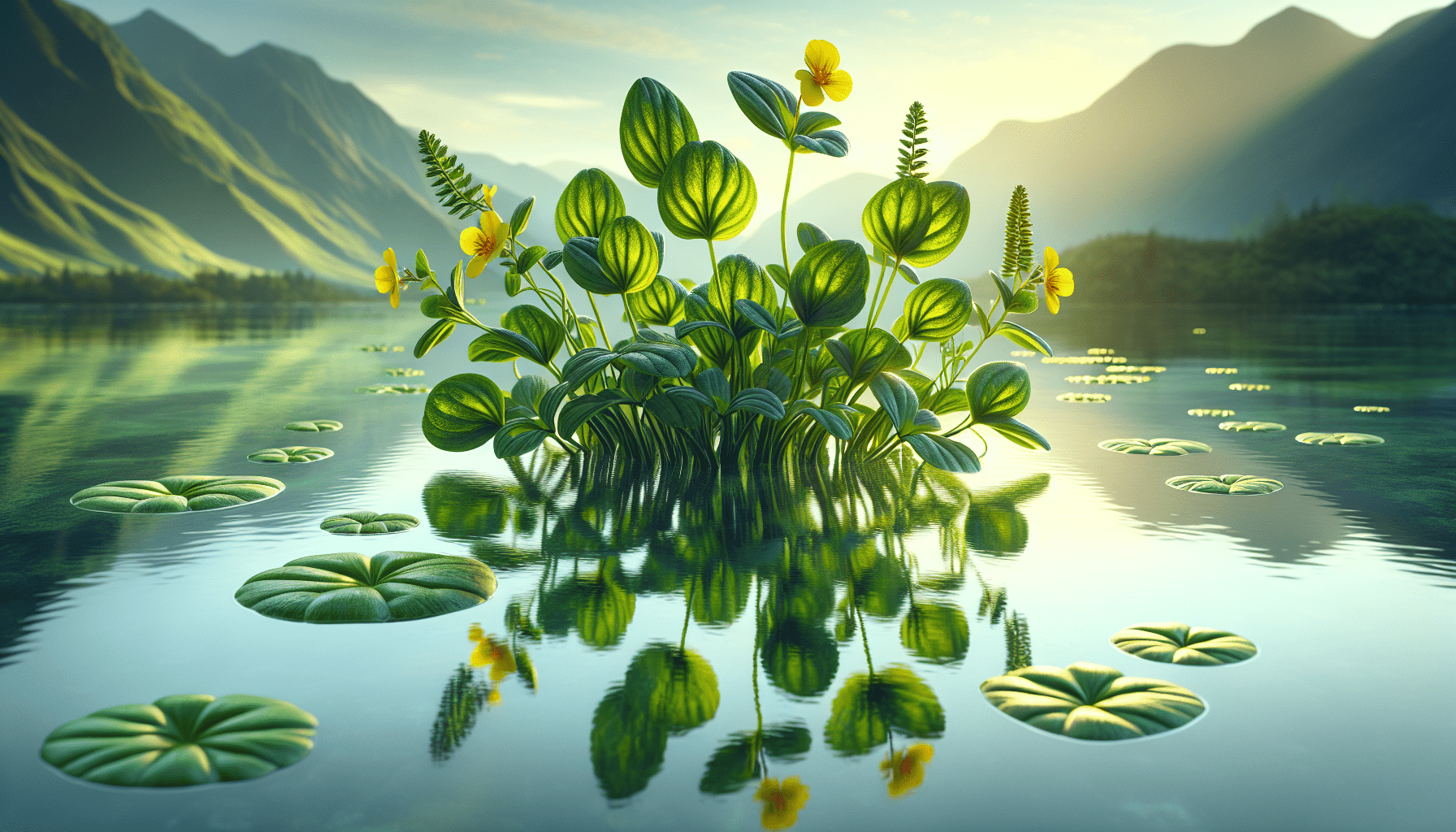Have you ever wondered how certain plants can contribute to environmental solutions, like water filtration and restoration? Often, when we think about plants, we imagine lovely gardens or dense forests. But some plants go beyond beautification; they offer ecological benefits that can make a significant difference in maintaining the balance of our natural environment. Today, let’s take a closer look at Ludwigia peploides, a plant species with remarkable potential in the realm of water filtration and restoration.

Understanding Ludwigia Peploides
What is Ludwigia Peploides?
Ludwigia peploides, commonly known as floating primrose-willow, is an aquatic plant that commonly adorns water bodies with its vibrant green leaves and yellow flowers. It’s a perennial plant that can thrive in various wetland environments, including marshes, ponds, and slow-moving streams. Unlike many terrestrial plants, Ludwigia peploides can float or be rooted in shallow water, making it versatile and adaptable to different aquatic conditions.
Native Habitat and Distribution
This plant is native to North and South America but has since spread to other parts of the world. The adaptability of Ludwigia peploides allows it to inhabit a range of climates and water conditions. However, its expansive growth pattern in non-native regions can lead to some ecological challenges, which we’ll discuss later.
Ecological Characteristics of Ludwigia Peploides
Growth and Reproductive Traits
Ludwigia peploides grows rapidly, forming dense mats over water surfaces. It propagates both sexually, through seed production, and asexually, via stem fragments. This dual reproductive capability ensures that the plant can quickly colonize new areas, often outcompeting native species.
Adaptation to Aquatic Environments
One of the most intriguing aspects of Ludwigia peploides is its adaptability to different water conditions. It can survive both in clean and polluted water bodies, which speaks to its resilience. This adaptability is a double-edged sword, providing both potential benefits and drawbacks when considering its use for water filtration.
Ludwigia Peploides and Water Filtration
The Filtration Process
The concept of using plants for water filtration is closely tied to phytoremediation, a process where plants are used to absorb, accumulate, and detoxify pollutants. Ludwigia peploides, with its extensive root system, can uptake a variety of pollutants, including excess nutrients, heavy metals, and even some organic contaminants.
Benefits of Using Ludwigia Peploides for Filtration
- Nutrient Uptake: This plant can absorb nitrates and phosphates, which are common pollutants in water bodies due to agricultural runoff. By reducing these nutrients, Ludwigia peploides helps prevent algal blooms, which can deplete oxygen in the water and harm aquatic life.
- Heavy Metal Absorption: Some studies suggest that Ludwigia peploides can absorb heavy metals like cadmium and lead. This ability could help mitigate pollution in industrial areas where heavy metal contamination is a concern.
- Low Maintenance Requirement: Once established, this plant requires minimal care, which could make it a cost-effective solution for large-scale water filtration projects.
Challenges of Using Ludwigia Peploides
Potential for Invasive Growth
While Ludwigia peploides can be beneficial in its native range, it can become invasive elsewhere, outcompeting local flora and disrupting ecosystems. This is a significant consideration when introducing the plant into non-native areas for filtration purposes.
Management and Control
Managing the growth of Ludwigia requires regular monitoring and maintenance to ensure that it does not adversely impact local ecosystems. Natural control methods, such as introducing specific herbivores or utilizing mechanical removal, might be necessary to keep its growth in check.
Environmental and Regulatory Considerations
Before incorporating Ludwigia peploides into any water filtration project, it is crucial to assess the environmental regulations and guidelines. This ensures that the introduction of the plant will not violate legal stipulations or harm local biodiversity.

Ludwigia Peploides in Water Restoration Projects
Restoration of Aquatic Habitats
Beyond filtration, Ludwigia holds promise in restoring aquatic habitats disrupted by pollution or human activity. Its ability to stabilize shorelines and provide habitat for aquatic life makes it a versatile tool in ecological restoration.
Enhancing Biodiversity
The structure provided by dense mats of Ludwigia peploides can serve as a habitat for various aquatic organisms. This can enhance biodiversity by providing food and shelter, creating a thriving ecosystem where all forms of life can flourish.
Case Studies: Success Stories and Learnings
Several restoration projects around the world have leveraged Ludwigia peploides with varying degrees of success. By learning from these case studies, new initiatives can be more effectively designed to balance environmental benefits with ecological concerns.
Practical Applications of Ludwigia Peploides
Urban and Industrial Water Management
In urban areas and industrial sites, Ludwigia can be used to enhance existing water management systems. By integrating the plant into man-made wetlands or retention ponds, it can naturally process pollutants and improve water quality.
Agricultural Runoff Mitigation
Agricultural fields often contribute to nutrient pollution in nearby water bodies. By strategically planting Ludwigia peploides along watercourses adjacent to farmlands, it can help filter out excess nutrients before they reach larger bodies of water, thus limiting their impact.
Community Engagement and Education
Engaging local communities in projects involving Ludwigia can lead to greater awareness of water quality issues and the solutions available. Educational programs can empower citizens to take part in conservation efforts, fostering a culture of environmental stewardship.
Conclusion
As you can see, Ludwigia peploides holds substantial promise for use in water filtration and restoration efforts. Its resilience, nutrient uptake capabilities, and role in habitat restoration showcase its potential as an ecological ally. However, responsible implementation is key to ensuring its benefits outweigh any potential ecological threats. With careful management and community involvement, Ludwigia could play a critical role in the ongoing quest to maintain clean and healthy water systems worldwide.
